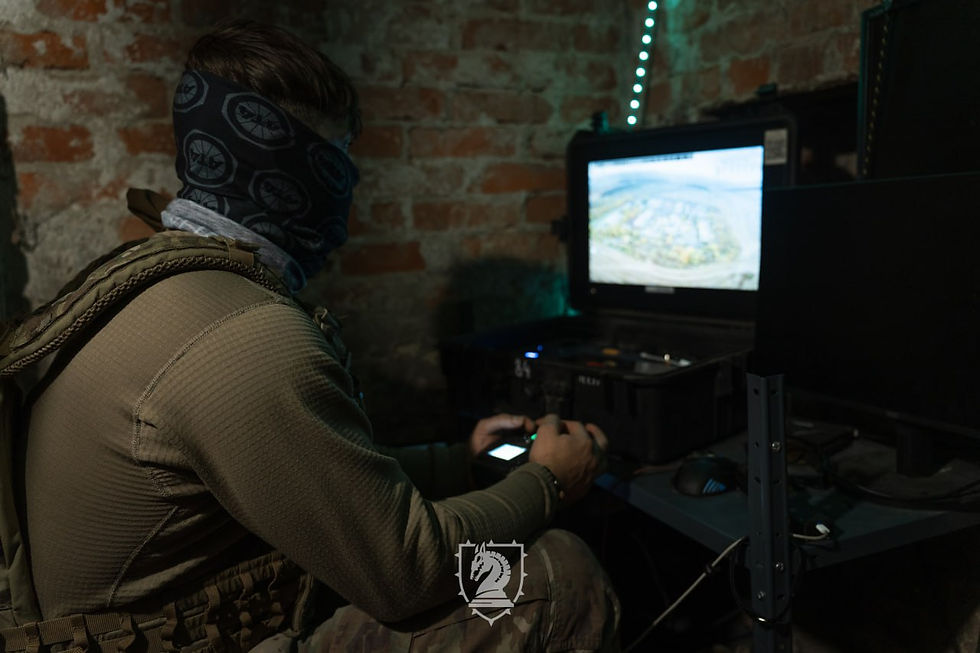Guns Not Missiles Will Defeat the Drone
- Res Publica

- Nov 6
- 4 min read
Missiles are not a panacea for air defense. Europe needs a return to guns – they’re cheaper and more practical.

Photo: 115 separate mechanized brigade of the Armed Forces of Ukraine
For decades, defense departments and the defense industry have pushed missiles as the solution to target destruction. The tank? Use a missile. The helicopter? Use a missile. And the low-flying MiG-29 or cruise missile? Don’t worry, we have missiles for that.
But this reliance ignores the lessons of conflicts in the guided-missile age. The 1982 Falklands War saw the Royal Navy pulling Bofors guns out of museums and strapping 7.62mm machine guns to the side of ships to deal with the threats they faced. Missiles were not enough.
Ukraine has come to similar conclusions. Its layered defenses against huge Russian drone and missile attacks are heavily gun-reliant — take the self-propelled Gepard, with twin 35mm radar-assisted guns mounted on a Leopard chassis, which has been highly effective at shooting down drones despite its origins in the 1970s. These form part of a network of around 1,000 mobile fire groups, which are mostly armed with guns.
Despite the operational lessons, the benefits of traditional ground-to-air flak have been under-emphasized, and the bulk of Western research and development work has gone into improving missiles.
This has paid some dividends — they are now more accurate, more reliable, faster, and easier to deploy. And there are situations where only missiles will do. They can (sometimes) combat high-end ballistic and cruise missiles, where guns are less capable or even redundant.
But complexity costs. Sure, prices fall with volume, but there is a level under which they will never go. Rocket engineers don’t come cheap, nor does the machinery to build their designs, or the final product. Even now, with demand high and the war against Ukraine in its fourth year, Western missile production lags demand. China is meanwhile throttling supplies of critical minerals like gallium that are key to producing missiles.
In the years since Russia’s full-scale war of aggression against Ukraine in February 2022, the Kremlin has hugely increased drone production and can now bombard the country with more than 800 UAVs and missiles in a single night. These unmanned vehicles were initially used mainly for reconnaissance and intelligence, but tacticians quickly recognized their utility in multiple roles. This author even pitched an anti-drone drone in December 2022 because it was clear there was a growing need. These are now central to Ukraine’s defenses and cost only around a fifth of an interceptor missile.
On October 17, Russia targeted 136 drones at Kyiv alone, using massed attacks organized into waves. Drones have a military function, but the Kremlin also uses them as tools of terror to aim at the civilian population.
Such drone swarms have also demonstrated that using expensive missiles of more than $1m each against cheap Shaheed drones at around $35,000 each is not the answer. If missiles aren’t the solution, then what is?
To answer this question, we need to understand the scale of the problem. Shaheed-style drones are cheap, mass-produced flying bombs that can swamp missile systems.
What happens if Russia becomes capable of sending 1,000, 2,000, or even 4,000 drones in one night? These figures are achievable with modern production methods, and Ukraine would run out of missiles very quickly.
The solution will be modern-day flak, married with interceptor drones.
The Gepard FlakPanzer carries 640 rounds, the BAE Systems Bofors Tridon Mk2, mounted on a flatbed truck, carries 100 rounds, and the Rheinmetall Skyranger 35 (recently ordered for Ukraine) carries 220 rounds in the turret.
With the exception of the much older Gepard, these are one or two-shot kill systems which, with modern computing, can quickly retarget. That means their capacity to take on a Shaheed drone swarm is considerably greater, as well as cheaper, than banks of missiles.
It does not take much imagination to see how units made up of such systems could protect a city, key infrastructure, or a military installation.
As it stands, there is little information on the price per round for the various systems, but a recent order for Gepard ammunition was filled at $600 per round. At that price, and with one, two, or even five rounds needed per drone, it becomes increasingly attractive as a means to counter the threat.
Better still, and this will be important, economies of scale can and will be gained through the mass production of ammunition. Once Europe is utilizing these European-designed and European-manufactured systems, the scale and incentive will be there to reduce the per-item cost.
Rheinmetall has demonstrated the versatility of its Skyranger 35 turret system, attaching it to the chassis of a Leopard 1 tank and giving militaries the choice of tracked or wheeled options. Wheeled vehicles move quicker on roads, while tracked vehicles have greater cross-country ability and ammunition capacity, offering mobile drone protection to any armored brigade.
The benefits of these flak systems are many, but where Ukraine and all of Europe’s defense is concerned, scale is vital. Having only 10 or 20 Bofors Triden2 systems would be meaningless in the face of the risk of a massed drone attack on cities. The question is whether politicians understand it is something they must invest in, and at scale.
By David Brookfield. David Brookfield is a British army veteran. He is the host of military and geopolitical Twitter/X Spaces and a podcaster with The ShipWrekt Team. Interviews veterans on strategic insights, technological shifts, and global politics. He was 15 years a Royal Engineer, or sapper. Article first time published on CEPA web page. Prepared for publication by volunteers from the Res Publica - The Center for Civil Resistance.





Comments